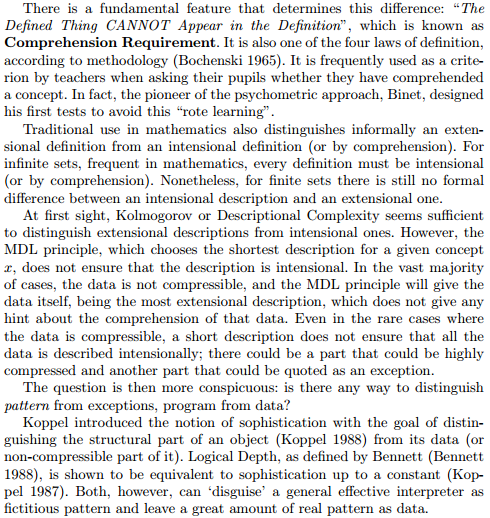In reality, we already know that there is nothing in biology that is inconsistent with physics, chemistry and mathematics. In one of the most fundamental biological experiments in the twentieth century, Harold Morowitz and colleagues took cysts of the complex multicellular brine shrimp Artemia down to 2.2 degrees Kelvin (less than –270 °C), left them for six days, then slowly warmed them to room temperature, where they revived, grew and reproduced. At such low temperatures, information on energy levels, positions and velocities of electrons is lost; the only information left is about the chemicals and their relative positions. This tells us (as discussed in Penny D (2005) Biol Philos 20: in the press) that the composition and organization of chemicals is all that is required for a system to be alive. [emphases mine]The composition and organization of the biochemical machinery in the cells is the embodiment of information. Information that is independent of the energy levels, positions, and velocities of electrons, much as would have been predicted by Polanyi's "Life's Irreducibility." Polanyi agreed that life was not inconsistent with physics and chemistry--but it wasn't explained by them. Aside from the insight of the experiment (as opposed to the lesson drawn by Penny), the reductionist fallacy is unhelpful:
The low-level information of particular particles turns out to be unnecessary for the organism to recover its machine-like thermodynamic process.
___________________________________________
Therefore, organization is sufficient for life.
 Life can be suspended, therefore it is limited to a particular kind of organization (the kind that is presumably measurable). Reminds me of the reasoning that missed the early discovery of vitamin D. If a human being could be frozen in the same way, would that mean that there is nothing more to persons than their observable structure? Organization could be sufficient for the simplest examples of life. Or not. But the reasoning seems terribly flawed and overweening. Non-simulated "artificial life" has always involved already living cells.
Life can be suspended, therefore it is limited to a particular kind of organization (the kind that is presumably measurable). Reminds me of the reasoning that missed the early discovery of vitamin D. If a human being could be frozen in the same way, would that mean that there is nothing more to persons than their observable structure? Organization could be sufficient for the simplest examples of life. Or not. But the reasoning seems terribly flawed and overweening. Non-simulated "artificial life" has always involved already living cells. Penny seems to be replacing physical reductionism with biochemical reductionism. It all reduces to structure. No need for physics envy here: My biochemistry is bigger than your physics. Ahem. Here's what you can do with your electrons.
The low-level information of electrons turns out to be so much noise, compared to the functional information stored in the organism's structure. I'm skeptical about much else beyond that significant observation, but then in this day and age any skepticism about orthodox precepts can make you a "denier."
It's interesting from the standpoint of this question: What sort of dissipative systems are as dependent (fundamentally) on the thermodynamic state (distribution of energy levels and particle momenta) as on the structural configuration?
 |
| David Berlinski, The Devil's Delusion, p. 191 |


